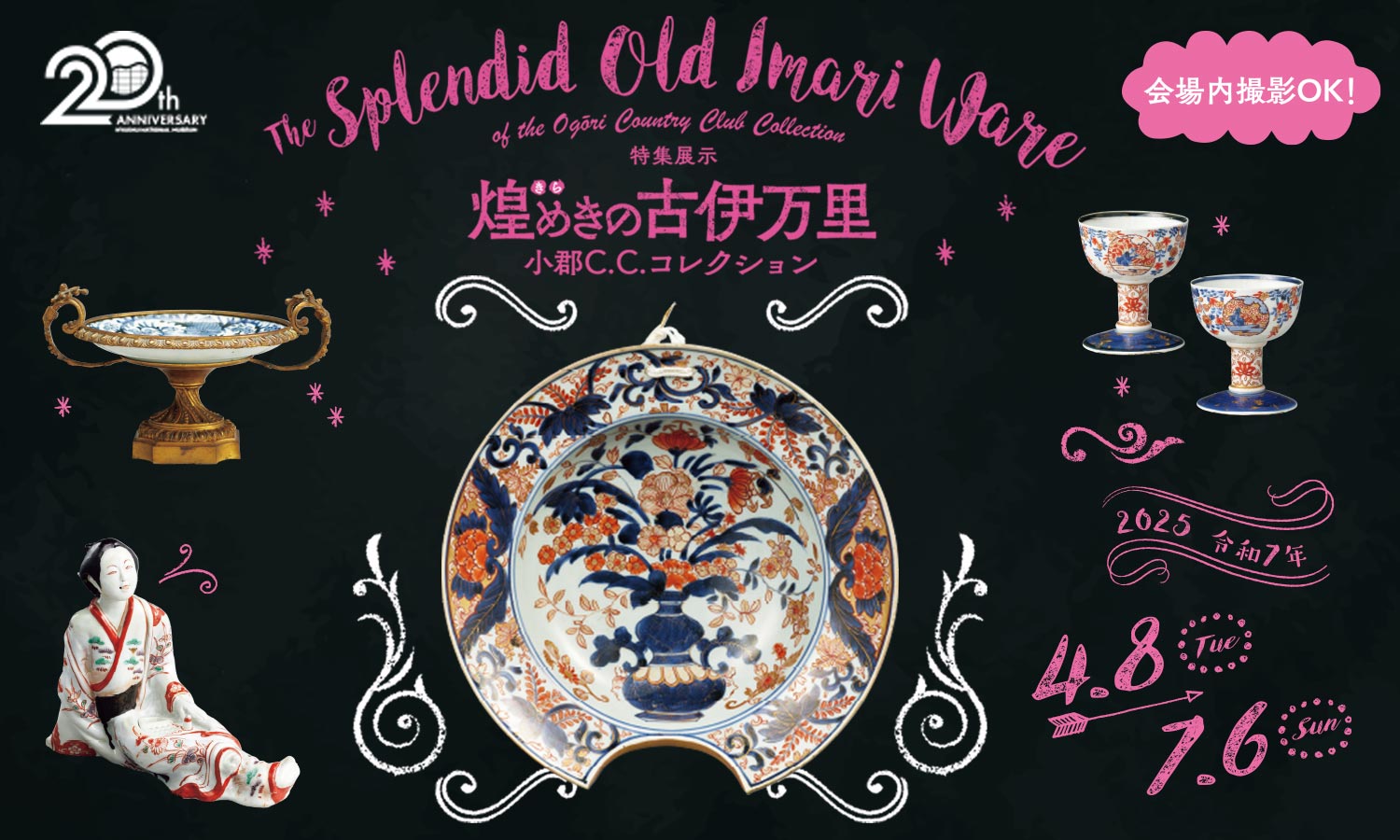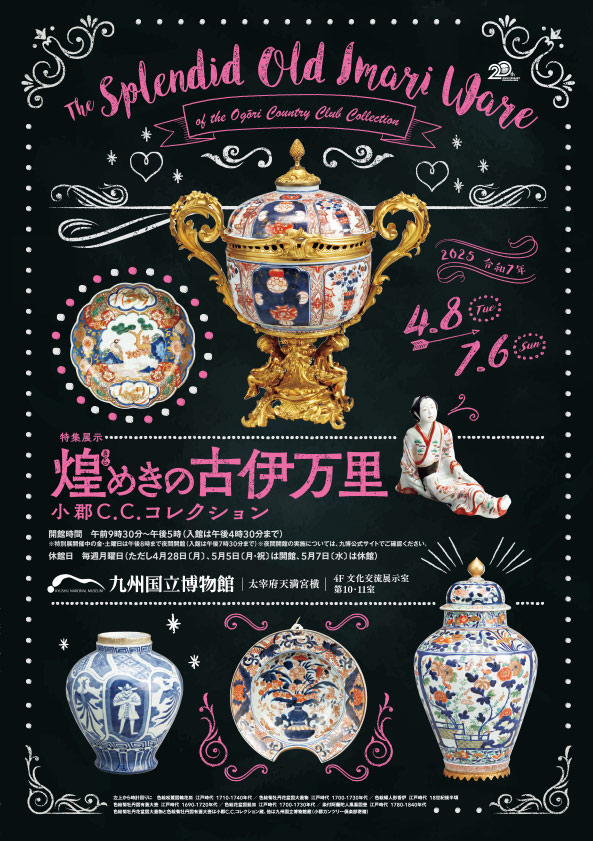Feature Exhibition
The Splendid Old Imari Ware of the Ogōri Country Club Collection
Feature Exhibition
The Splendid Old Imari Ware of the Ogōri Country Club Collection
The Ogōri Country Club Collection is a collection of Japanese porcelain featuring the splendid
export Old Imari ware adorning the castles of Europe in the 17th and 18th centuries. This
exhibition brings together a selection of the finest pieces of Old Imari ware that captured the
hearts of European royals and wealthy collectors in Japan. We would be delighted if the works on
display take you back in time to this century of splendor.
While scholarly explanations of Old Imari ware form the basis of this exhibition, we are
additionally appealing to younger visitors with a dual explanation system offering simple
captions for selected pieces.
Exhibition Period |
|---|
8 April (Tues) – 6 July (Sun) 2025 |
Venue |
|---|
Rooms 10 and 11, Cultural Exchange Exhibition Hall (Floor 4) |
Tickets: Cultural Exchange Exhibition Hall (Permanent Exhibition) |
|
|---|---|
| Adults | 700 yen |
| University students | 350 yen |
| High school students, visitors under 18, and seniors above 70 Free | |
*For more information on ticket prices, please refer to this page.
Leaflet |
|---|
The Ogōri Country Club Collection
The Ogōri Country Club Collection comprises over 200 pieces of Japanese porcelain
acquired by Ogōri Country Club, one of the premier golf course operators in Kyushu,
for the purpose of founding a museum. Most of the pieces in the Ogōri Country Club
Collection are Old Imari ware created for European export. The collection also
encompasses Old Imari ware distributed mainly within Japan, as well as important
pieces of Arita and Satsuma ware from the late 19th to early 20th centuries.
At the request of Ogōri Country Club, 51 of the works in the collection were
entrusted to Kyushu National Museum as of 2012, and a further 176 pieces were
donated in 2018.
Exhibition Highlights

Dishes with flower vases and phoenixes
Imari (Arita) 1700s-30s
The design of flowers arranged in baskets or vases is called kabonzu. Most often seen on porcelain in the kinrande style, this motif was also depicted on porcelain from China, which was a competitor in the European market. It is rare to find extant 5-piece sets of kinrande porcelain such as these.

Large lidded bowl with flower vases
Imari (Arita) 1700s-1730s
In Europe, many pieces of oriental porcelain come with metal decorations and lids that were attached later. Since palaces and castle spaces were arranged in a single style, European metal fittings share the features of architecture and furnishings of the same period. This potpourri jar was adapted with gilded openwork to release fragrance from the space between the Imari ware bowl and lid.

Large lidded jar with a lion and peonies
Imari (Arita) 1690s-1720s
A lion and peony design graces the body of this gorgeous jar. Gold paint was used on the lion's mane and tail, as well as the peonies that decorate the body. The canopy-shaped lid and shoulders of the jar feature alternating cobalt and gilded frames filled with flowers, lending it the effect of a lace collar.

Large dish with the map of Japan
Imari (Arita) 1831-1845
Plates depicting Japanese maps were used in feudal Japan up until the mid-Edo period. The polymath rōnin Hiraga Gennai (1728–80) had ceramics known as Gennai ware created during the Hōreki era (1751–64). Map plates were among these pieces. Imari ware with the dates of the Tempō era (1830–1844) inscribed in underglaze blue have been found, indicating that such plates were produced at that time. Some map plates had fictitious lands such as “Dwarf Province” and “Female Protectorate.” They came in rectangular as well as round versions.

Bowl with fans, flowers and a foliated rim
Satsuma Kyōkōzan kiln, 19th century
Satsuma ware was first fired in the Satsuma domain (present-day Kagoshima) during the Keichō era (1596–1615). These kilns produced everyday items like black-glazed tea containers. At the end of the Edo period (1603–1868), Satsuma kinrande appeared. This was a type of white glazed pottery elaborately decorated with gilded polychromatic enamels. Exhibited at the Paris (1867) and Vienna (1873) Expositions, they won worldwide acclaim. These glamorous, exotic, gold-covered pieces were very popular in North America and Europe. This led to the production of kinrande ceramics in which the white-glazed vessels were made in Satsuma, with overglaze painting done in the ports of Tokyo, Yokohama, Nagoya, and the Kansai region. Influenced by Satsuma, Kyoto developed its own style of kinrande ware known as Kyo-Satsuma. On display are pieces like this vase, known as Hon-Satsuma, inscribed with the Shimazu family crest and the name of the kiln that made it, Kyōkōzan. We will also show Kyo-Satsuma ware.
Enjoying this Exhibition
Here is a great
opportunity to appreciate art! No need to be self-conscious. Relax and
enjoy it!
In this exhibition, we will guide you through the world of ✨Splendid Old
Imari Ware✨.
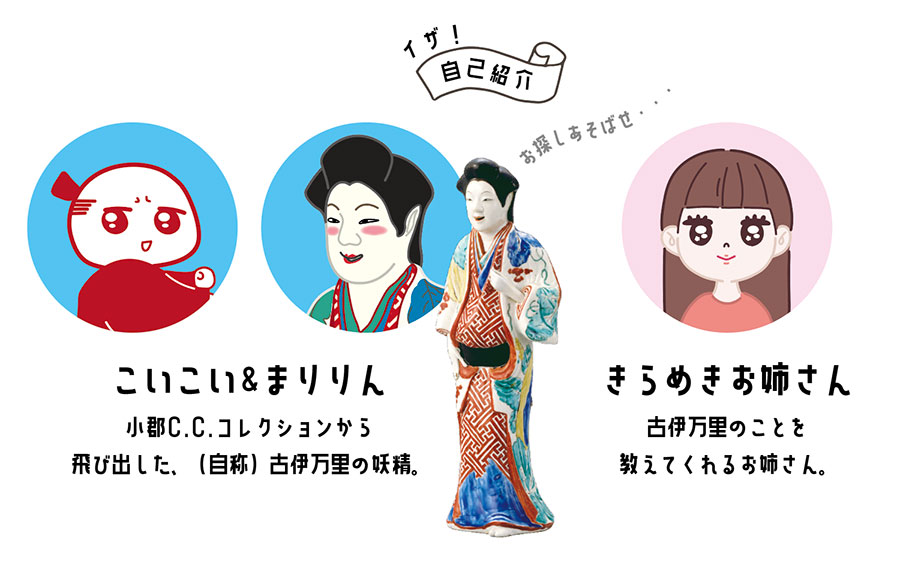
The keyword is “Love at First Sight💕”
In the exhibition rooms, things that have made us swoon are introduced along with descriptions of the pieces. Please try to look for them. We would be very happy if you could also find your own “Love at First Sight”.
Look for 2 types of Snapshots in the Exhibition Rooms.
“Love at First Sight” Snapshots
Koi-Koi, Marilyn, and the Professor’s “love at first sight” points are introduced for these works.
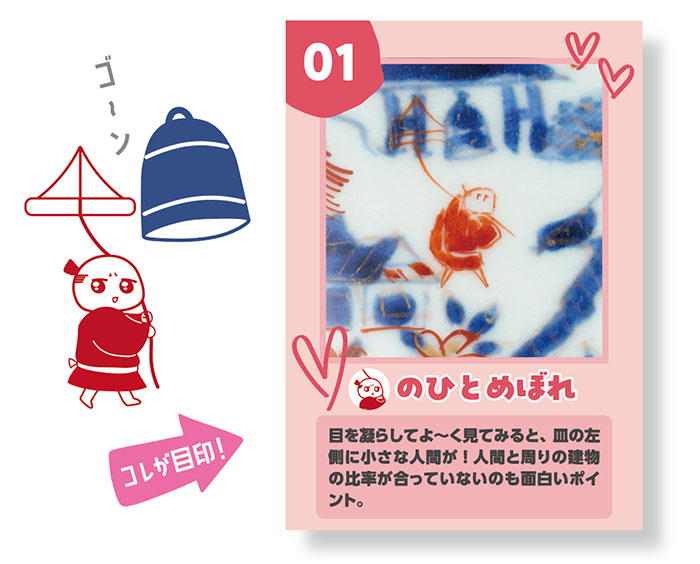
Just a Few Words
Oh? It looks like the pieces are chatting about something. Listen to what they have to say.
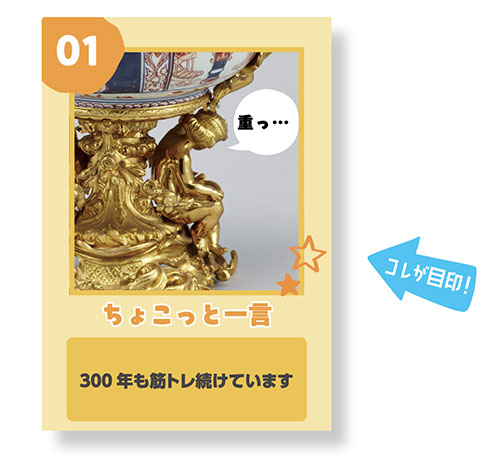
Social Media Posts are Welcome!
Please share what you have fallen in love with!
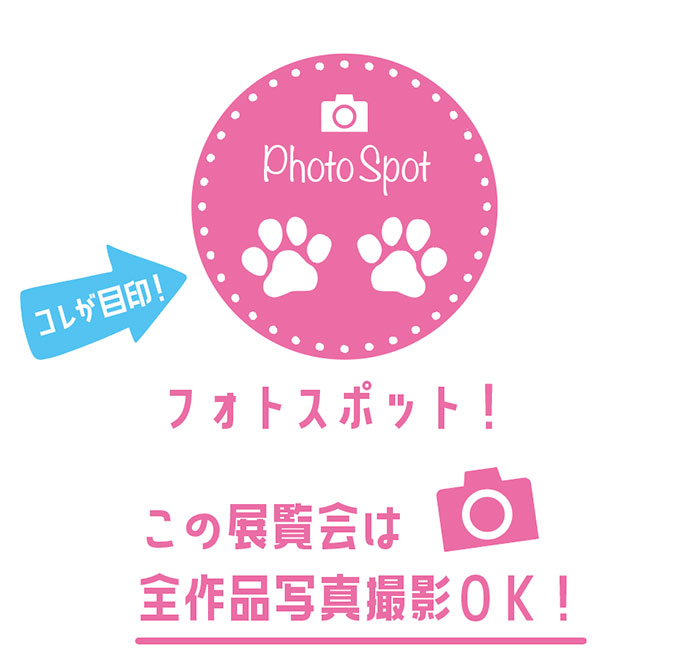
Feature Exhibition The Splendid Old Imari Ware of the Ogōri Country Club Collection
Special Sticker Present Campaign
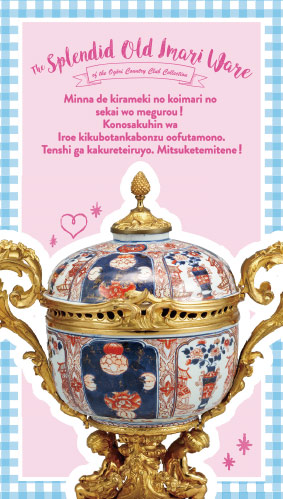
Activity Period:
8 April (Tues) – 6 July (Sun) 2025
Participation:
FREE (Please note that you will need a ticket to enter the Cultural Exchange Exhibition Hall)
How to participate:
① Take pictures of the works in this exhibition in the Cultural Exchange Exhibition Hall. (Take one photo each from the “Love at First Sight” works and Photo Spots, for a total of 2 photos.)
② Post your photos on Instagram and/or X(formerly Twitter), or submit them through our online form! If posting on Instagram or X(formerly Twitter), please follow our official Kyushu National Museum account, and include the hashtag #きらめきの古伊万里in your post.
③ Head to the Information Counter on Floor 4. Please show our staff your post on Instagram or X (formerly Twitter), or the confirmation email (for submissions through our online form) to get a sticker.
Where to receive your sticker:
The Information Counter on Floor 4
Notice:
・Please note that visitors are eligible to receive up to 1
sticker per person per visit.
・Please note that in order to receive a sticker, you are asked
to post photos of “Love at First Sight” works and Photo Spots on
either/both Instagram or X (formerly Twitter), or submit the
pictures through our online form.
・When the Information Counter on Floor 4 is crowded, please be
ready to show your phone screen to our staff before arriving at
the Counter.
For inquiries, please contact:
Kyushu National Museum, Public Relations Division at 092-929-3272 (only in Japanese), or please leave a message through our contact form: https://www.kyuhaku.jp/en/mailform.html
Events
No registration required, up to 280 attendees
Kyuhaku ☆ Special Seminar
Overseas Export of Old Imari ware as seen through the Ogōri Country
Club Collection
Speaker: Ōhashi Kōji (Honorary Advisor, The Kyushu Ceramic Museum)
Speakers: Ōhashi Kōji, Itō Yoshiaki (Secretary-General, Aichi Prefectural Ceramic Museum; Director, Machida City Museum), Sakaida Chiaki (Head Researcher, Kyushu National Museum)
Keynote speech from 13:00
Roundtable discussion 13:30–15:30

